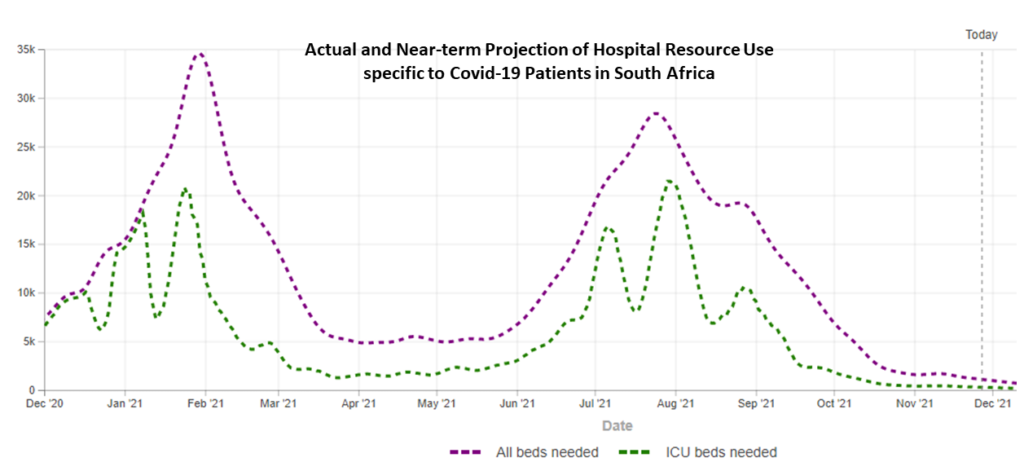As a supposed-to-be supply chain guy, I view the pandemic in terms of demand-pull and supply-push. I look at each covid case as a potential pull signal on health care services. Given this angle on reality, I want to see health care supply exceed covid’s demands. I want covid patients to have enough health care supply to credibly support potential recovery. I don’t want covid cases to crowd out health care for non-covid conditions. I want to reduce demand by consistent and widespread practice of non-pharmaceutical mitigation behaviors and maximum vaccination.
While many look at data focused on confirmed cases or deaths, I am much more focused on hospitalizations. Confirmed cases, even when reasonably accurate representations of population trends, are only indirectly related to demand for health care. So far, the vast majority of those infected with the growing family of SARS-CoV-2 viruses do not require medical care. Those who die no longer need medical care. From a network perspective — a supply chain utilitarian perspective — the most serious problems emerge when demand/need/pull for medical care exceeds the push capacity of the health care system. I regret sounding so Hobbesian.
In terms of Omicron (B.1.1.529) there are suddenly surging case counts in parts of South Africa, with more than 3800 new cases being confirmed per day. This is an increase of 827 percent over last week. Wastewater surveillance has found significant increases in proportional presence of viral fragments, in some sample locations increasing by a multiple of 100 over the last two weeks.
According to South African researchers:
There is no evidence for any clinical differences yet. What is known is that cases of B.1.1.529 infection have increased rapidly in Gauteng, where the country’s fourth pandemic wave seems to be commencing. This suggests easy transmissibility, albeit on a background of much relaxed non-pharmaceutical interventions and low number of cases. So we cannot really tell yet whether B.1.1.529 is transmitted more efficiently than the previously prevailing variant of concern, delta. (More and more.)
Given the quick-onset there has not yet been an increase in hospitalizations (see chart below). There will almost certainly be an increase in hospitalizations. Barely 20 percent of the South Africa population is vaccinated. But the virulence of this variant is not yet clear. The effectiveness of current vaccines is just now being examined.
I will monitor data updates from South Africa’s National Institute for Communicable Diseases. I will watch the chart-action generated by NextStrain, Reuters, and others. I will scan the Sunday Times online (Johannesburg). I will also pay attention as we see how, when, and where the variant moves around. As noted above, I will especially look at hospitalization counts.
